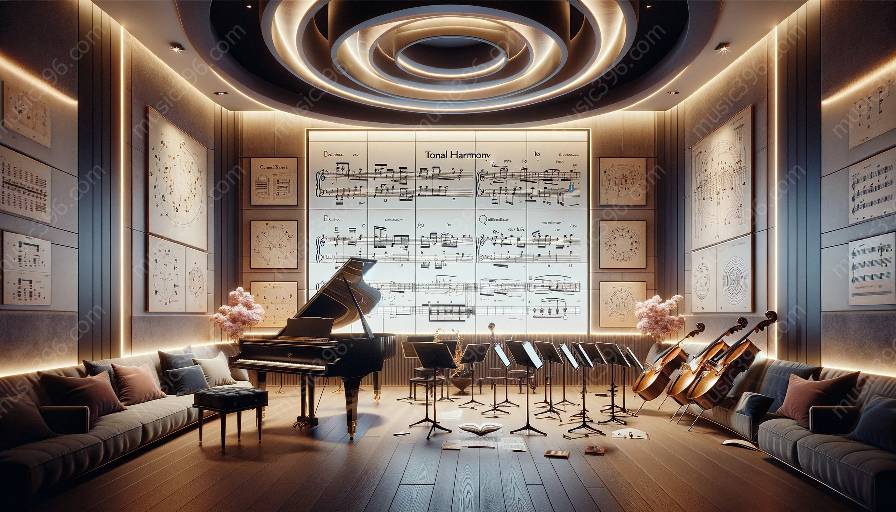Music theory provides a framework for understanding how different instruments contribute to harmonic conventions in tonal harmony. Explore the unique properties of various instruments and how they can be used to create a cohesive and enjoyable musical experience.
Tonal Harmony and Instrumentation
In tonal harmony, musical compositions are built around a tonal center or key, with chords and melodies conforming to the rules of that key. Understanding harmonic conventions across different instruments is essential for creating balanced and expressive musical arrangements.
Piano
The piano's versatility as a harmonic instrument lies in its ability to play both melody and harmony. Its range allows for complex chord voicings and the ability to cover multiple octaves, making it a fundamental instrument in tonal harmony. Composers and arrangers use the piano to outline harmonic progressions, provide melodic accompaniment, and create rich textures in their music.
Guitar
The guitar is a widely used harmonic instrument in various genres of music. Its unique timbre and fretboard layout allow for rich harmonies and chordal accompaniment. Guitarists often employ chord inversions and arpeggios to create harmonic interest, making it an essential instrument in tonal harmony and music theory.
Strings
String instruments, such as the violin, cello, and viola, contribute to harmonic conventions with their rich, resonant tones. Their ability to sustain notes and create expressive melodies adds depth and emotion to harmonic progressions. Composers and orchestrators utilize strings to create lush harmonies and melodic lines, enhancing the tonal harmony of their compositions.
Woodwinds
Woodwind instruments, including the flute, clarinet, and saxophone, contribute to tonal harmony through their agility and lyrical qualities. Their ability to articulate melodies and harmonies with precision and expressiveness adds color and texture to harmonic conventions. Composers and arrangers utilize woodwinds to provide harmonic support, melodic counterpoint, and expressive ornamentation.
Brass
Brass instruments, such as the trumpet, trombone, and French horn, contribute to harmonic conventions with their bold and majestic sound. Their powerful resonance and ability to play both melody and harmony make them essential in tonal harmony and music theory. Brass sections are often used to reinforce harmonic progressions, provide dynamic contrast, and add grandeur to musical arrangements.
Percussion
Percussion instruments play a unique role in harmonic conventions, providing rhythmic support and accentuating the tonal structure of a composition. While not typically associated with harmonic function, percussion instruments such as timpani, mallet percussion, and pitched drums can contribute to tonal harmony through carefully orchestrated rhythmic patterns and harmonic resonance.
Conclusion
Understanding harmonic conventions for different musical instruments is crucial in creating compelling and cohesive musical experiences. Through the application of tonal harmony and music theory principles, composers and arrangers can leverage the unique capabilities of each instrument to enrich harmonic progressions, create engaging textures, and evoke emotive expressions.

















































